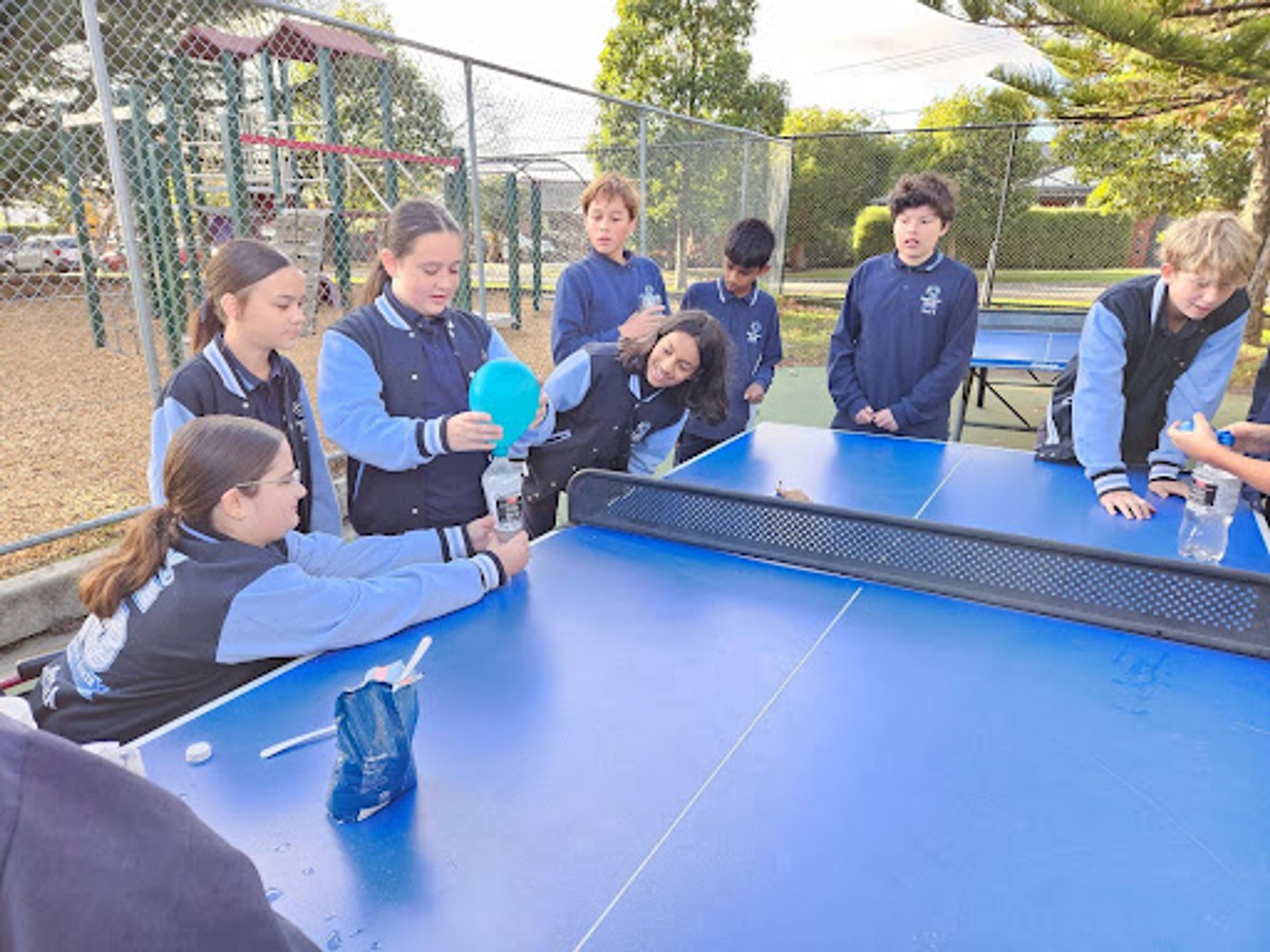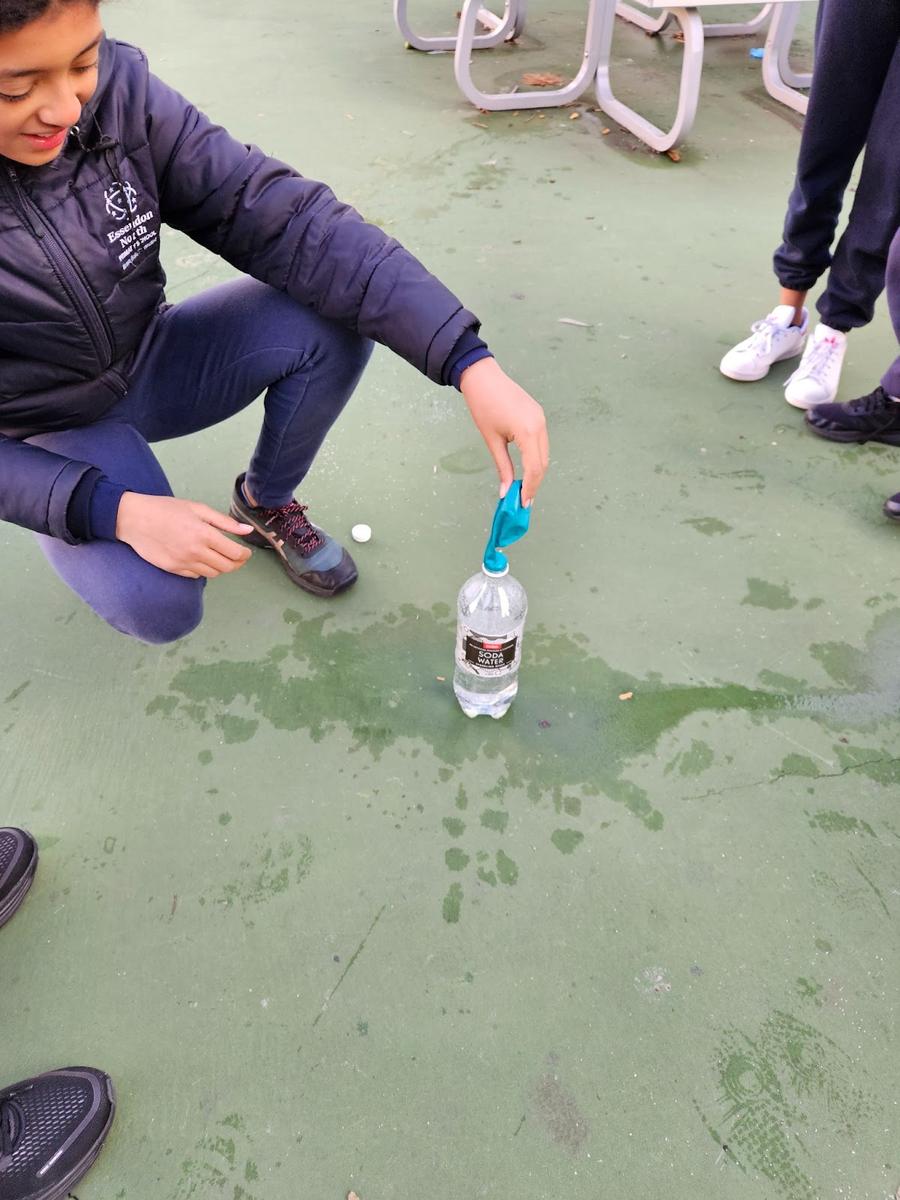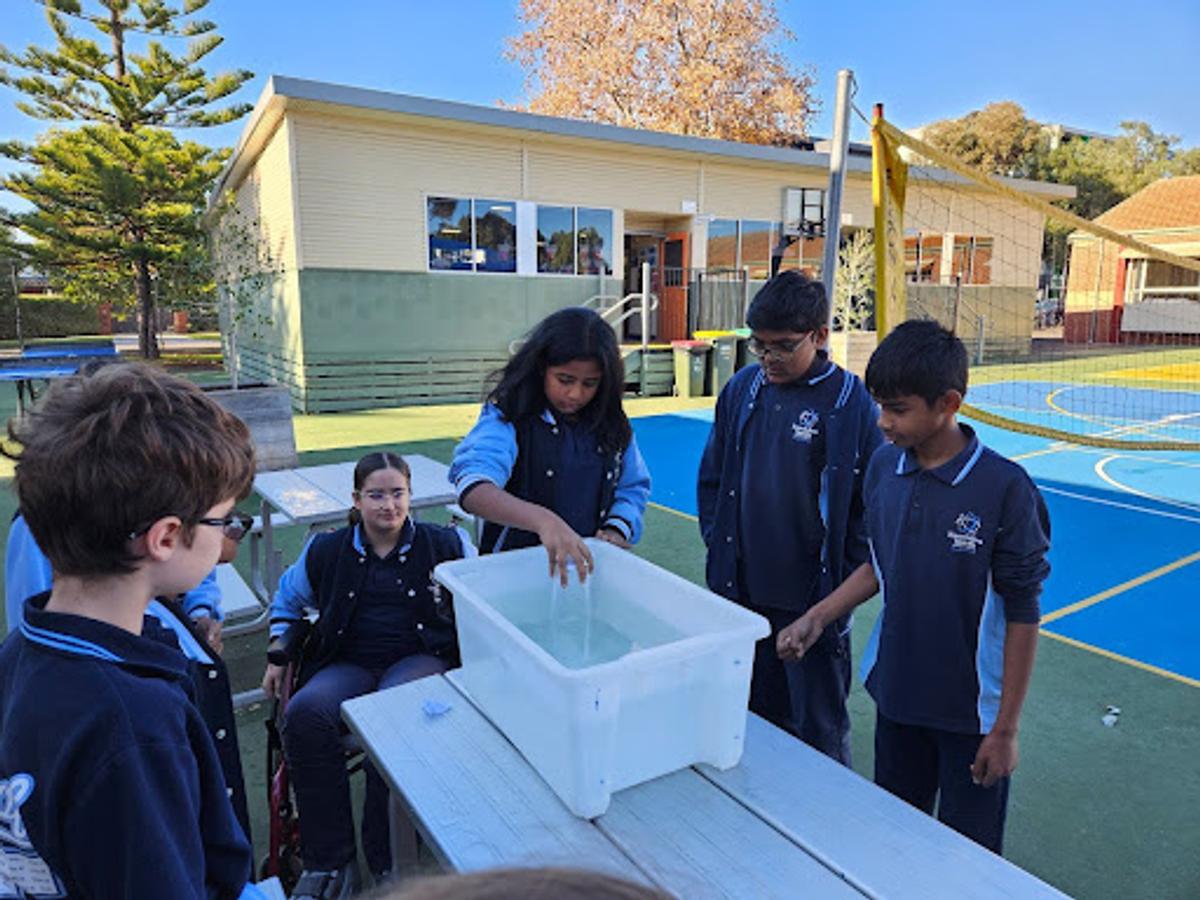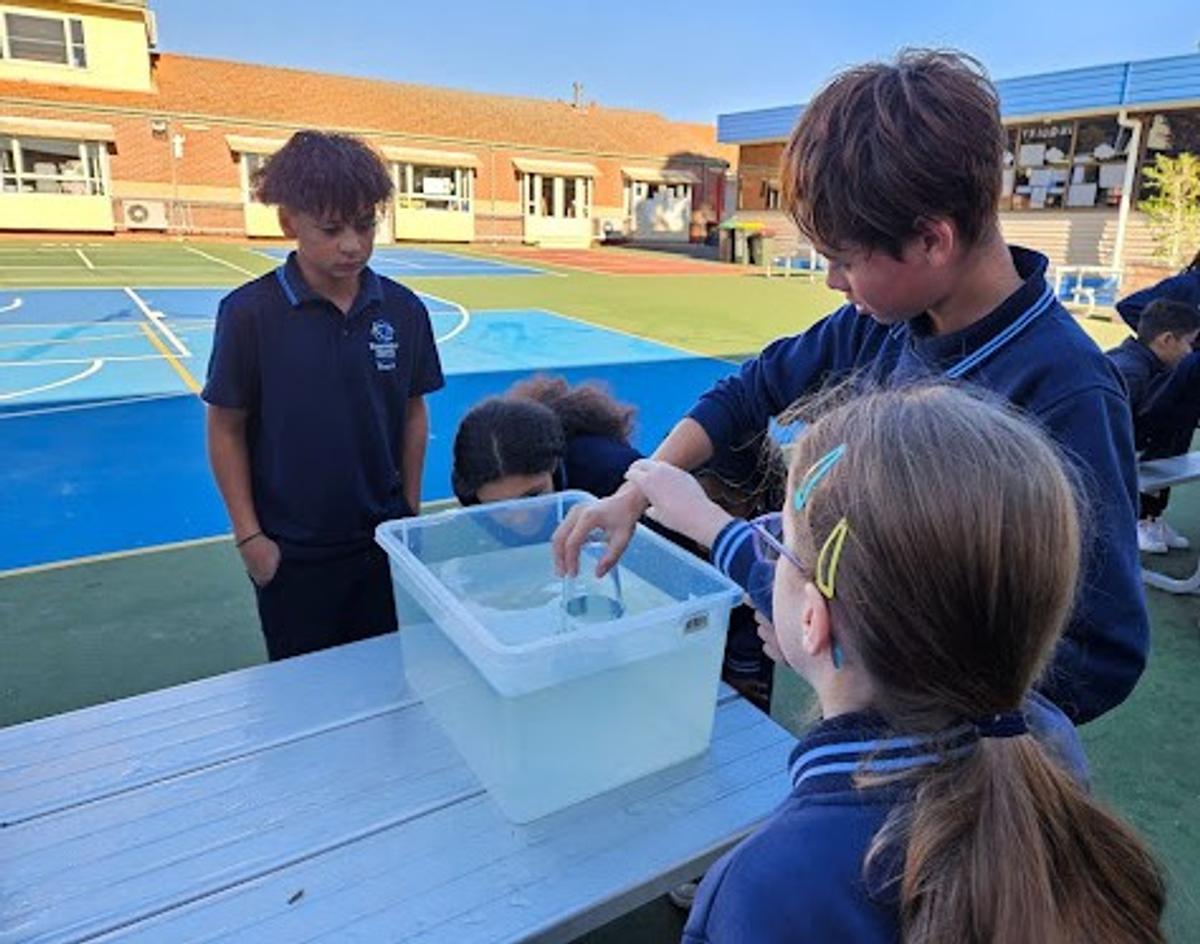Year Six

Year Six Science Experiments
By Nelson (6ZD)
The Year Sixes have been learning chemistry in science and even conducting some of their own experiments. We learnt all about the states of matter like solids, liquids, gases and even non Newtonian fluids. To help us understand we tested different products and listed down which state of matter they were in our new science books.
Another topic we learnt about was evaporation and condensation. To explore this topic we filled a cup halfway with water, carefully placing it in a ziploc bag and leaving it by a sunny window overnight. Once we entered the class the next day we saw droplets of water surrounding the cup in the plastic bag. This happened because once water is heated by sunlight it turns into vapour. As it gets higher in the sky it cools and forms clouds. When too many of these droplets are accumulated the cloud becomes too heavy and rains down.
The third topic we learnt was what irreversible changes occur to metal. To test our hypotheses we submerged a ball of steel wool in vinegar for four minutes in a cup then placed it on a tissue to dry. After ten minutes we started seeing shades of brown on the surface of the steel wool. This is because rust occurs when a ferrous metal has the three components metal, oxygen and water. Rust is also an irreversible chemical change.
Next we looked into what irreversible change occurs when salt and soda water are combined. To investigate this topic we put a balloon over a bottle of soda water and in the second bottle we placed half a teaspoon of salt in the balloon and then placed it over the bottle. We saw that the balloon with the salt inflated the balloon almost four times more than the one without salt. We saw this because when the bottle was closed all the carbon inside was trapped and compressed, so once the lid was off it all rose up. While the bottle with salt grew more due to a process called nucleation. The molecules inside the bottle were getting faster inflating the balloon but once the salt was in, the molecules had more points to bounce off making them go faster inflating the balloon much bigger.
For this topic we wanted to find out whether air was matter and had mass. To test this we taped a piece of paper at the bottom of a cup and flipped it upside down vertically in a tub of water then slowly lifted it back up. When we reached out and felt the piece of paper it was dry. This happened because since the air was mass it filled the cup leaving no space for the water to enter.
This unit has been a great experience and I hope to see similar things in the future.






